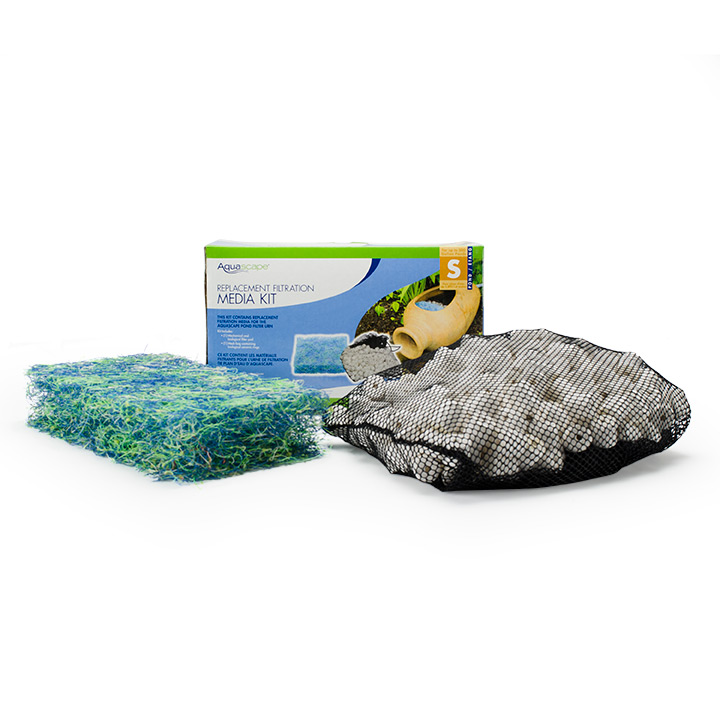Pond Filter Media Types: A Comprehensive Guide
Let’s talk about pond filter media types. A pond, whether it’s a tranquil koi pond or a bustling water garden, is a captivating addition to any outdoor space. However, maintaining crystal-clear water in your pond requires an effective filtration system. One of the crucial components of this system is the filter media, responsible for trapping debris and ensuring the water remains clean and healthy.
In this blog post, we’ll embark on a journey through the world of pond filter media types. We’ll explore the various options available, understand their functions, and help you make an informed decision about the most suitable media for your specific pond needs.
Why Pond Filtration is Vital
Before we dive into the different types of media, let’s briefly understand why pond filtration is essential:
- Water Clarity: A clean, clear pond enhances the visual appeal of your outdoor space and allows you to enjoy your fish and aquatic plants to the fullest.
- Water Quality: Proper filtration removes harmful toxins, such as ammonia and nitrites, promoting a healthier environment for fish and plants.
- Algae Control: Filtration helps control the growth of unsightly and potentially harmful algae blooms by reducing excess nutrients.
- Fish Health: Adequate filtration ensures that the water provides the ideal living conditions for your fish, preventing stress and disease.
Mechanical vs. Biological Filtration
Before we delve into specific filter media types, it’s important to understand the two primary types of filtration:
- Mechanical Filtration: This type of filtration physically removes debris from the water. It includes the use of filter pads, brushes, or foam that trap particles as water passes through.
- Biological Filtration: Biological filtration relies on beneficial bacteria that break down harmful substances in the water, such as ammonia and nitrites, turning them into less harmful compounds.
Most pond filtration systems incorporate both mechanical and biological filtration to ensure comprehensive water purification.
Common Types of Filter Media
Now, let’s explore the various filter media options available for both mechanical and biological filtration:
1. Mechanical Filter Media:
a. Filter Pads and Sponges: These are typically made of polyester or foam and are excellent for trapping larger debris like leaves, twigs, and fish waste. They are easy to clean but may need frequent maintenance.
b. Filter Brushes: These cylindrical brushes provide mechanical filtration while also promoting the growth of beneficial bacteria on their bristles. They are excellent for removing larger particles.
c. Filter Nets and Screens: These coarse mesh materials effectively capture large debris and prevent it from entering the pond.
2. Biological Filter Media:
a. Biological Balls: Often made of plastic, these balls have a porous surface that encourages the growth of beneficial bacteria. They offer a large surface area for bacterial colonization.
b. Bio-Balls: These plastic, hollow spheres provide ample surface area for beneficial bacteria to thrive. They are lightweight and easy to use.
c. Ceramic Rings: Ceramic rings are highly porous and provide an ideal surface for beneficial bacteria to colonize. They are durable and can last for years.
d. Filter Media Mats: These mats are designed to provide both mechanical and biological filtration. They have a coarse side for mechanical filtration and a porous side for biological filtration.
Choosing the Right Filter Media
Selecting the appropriate filter media for your pond depends on several factors:
- Pond Size: Larger ponds may require more extensive filtration systems and larger media.
- Fish Load: A pond with a higher fish population will benefit from a more robust filtration setup and ample biological media.
- Plant Density: Aquatic plants can aid in biological filtration, so consider the number and type of plants in your pond.
- Maintenance Preference: Some filter media require more frequent cleaning than others. Consider your willingness and ability to perform regular maintenance.
- Budget: Different types of media come with varying price tags. Balance your budget with the filtration needs of your pond.
Maintaining Your Filter Media
Proper maintenance of your chosen filter media is crucial for the long-term health of your pond. Regular cleaning and replacement, as needed, will ensure your filter system continues to operate efficiently.
A thriving pond begins with clean, clear water, and selecting the right filter media is a critical step in achieving this. By understanding the functions and benefits of different pond filter media types, you can make an informed decision that suits your pond’s unique requirements. Whether you opt for mechanical filter pads, biological bio-balls, or a combination of both, your pond will thank you with crystal-clear water and a healthy aquatic ecosystem.
Check out our store for all your water gardening needs! Aquascape products are Aquascape Inc. Certified.
Thanks for reading at Meyer Aquascapes! We hope you’ve enjoyed our post on garden pond design. Please leave a comment below if you liked it or have any questions. We’d love to hear from you! Thanks for stopping by!



